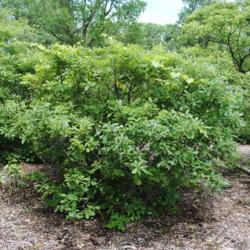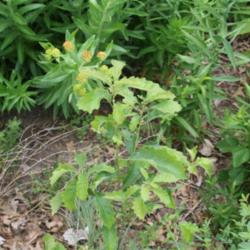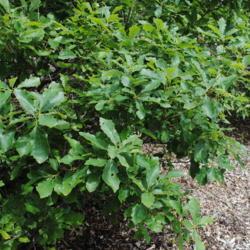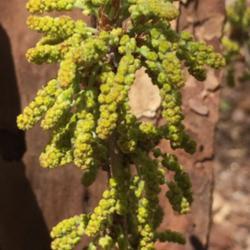| Plant Habit: | Shrub Tree |
| Life cycle: | Perennial |
| Sun Requirements: | Full Sun |
| Water Preferences: | Mesic Dry Mesic Dry |
| Soil pH Preferences: | Strongly acid (5.1 – 5.5) Moderately acid (5.6 – 6.0) Slightly acid (6.1 – 6.5) Neutral (6.6 – 7.3) Slightly alkaline (7.4 – 7.8) |
| Minimum cold hardiness: | Zone 4a -34.4 °C (-30 °F) to -31.7 °C (-25 °F) |
| Maximum recommended zone: | Zone 8b |
| Plant Height: | 5 - 20 feet |
| Plant Spread: | 5 - 20 feet |
| Leaves: | Unusual foliage color |
| Fruit: | Showy Edible to birds |
| Flower Time: | Spring |
| Suitable Locations: | Patio/Ornamental/Small Tree |
| Uses: | Provides winter interest Will Naturalize |
| Edible Parts: | Fruit |
| Dynamic Accumulator: | K (Potassium) |
| Wildlife Attractant: | Birds |
| Resistances: | Drought tolerant |
| Propagation: Seeds: | Sow in situ Seeds are hydrophilic |
| Pollinators: | Wind |
| Containers: | Not suitable for containers |
| Miscellaneous: | Tolerates poor soil Monoecious |
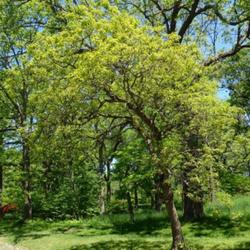
![Date: c. 1865
illustration [as Q. prinus chincapin] by Bessa from Michaux's 'No
Date: c. 1865
illustration [as Q. prinus chincapin] by Bessa from Michaux's 'No](/pics/2022-08-09/scvirginia/c46a24-250.jpg)

